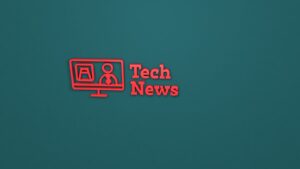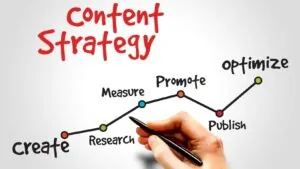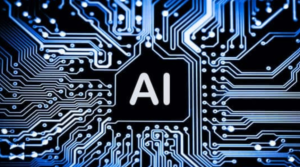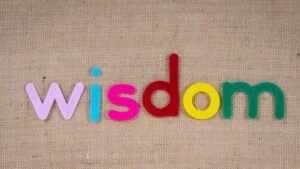The concept of workforce optimization has become increasingly important as businesses strive to enhance efficiency and productivity. The traditional approach of simply monitoring employees and setting goals has evolved significantly with advancements in technology. Today, workforce optimization is about leveraging tools and systems that empower employees, streamline workflows, and foster collaboration.
Technology’s role in redefining productivity has been transformative. With tools that analyze performance, automate tasks, and improve communication, businesses are finding innovative ways to get the ideal out of their teams.
What is Workforce Optimization?
Workforce optimization refers to the strategies and tools businesses use to ensure that employees are working at their full potential. It involves balancing workload distribution, improving operational efficiency, and creating an environment that supports employee engagement and satisfaction.
Modern workforce optimization goes beyond managing schedules and evaluating performance. It encompasses a comprehensive approach that integrates technology to address productivity challenges and align employee efforts with business goals.
The Role of Technology in Workforce Optimization
Technology is the driving force behind the shift to more sophisticated workforce optimization. From AI-driven analytics to collaborative platforms, these innovations are enabling businesses to reimagine how they manage and support their workforce.
-
Performance Analytics
Data analytics tools have become essential for tracking employee performance and identifying areas for improvement. These tools provide managers with insights into productivity trends, task completion rates, and potential bottlenecks.
For example, businesses can use performance dashboards to see which tasks are taking the most time and whether resources are being utilized effectively. By analyzing this data, companies can implement ideal practices to address inefficiencies and support underperforming employees.
-
Automation of Repetitive Tasks
Automation technology has revolutionized how employees handle repetitive and time-consuming tasks. By automating processes like data entry, report generation, and email follow-ups, businesses free up employees to focus on higher-value work.
This shift not only boosts productivity but also enhances job satisfaction by allowing employees to engage in more meaningful tasks.
-
Remote Work Enablement
The rise of remote work has made it clear that technology is critical for maintaining productivity outside traditional office settings. Collaborative tools like Slack, Microsoft Teams, and Zoom have become staples for communication, while project management platforms ensure accountability and task tracking.
Cloud-based solutions also allow employees to access resources from anywhere, fostering a more flexible and efficient work environment. By adopting these tools and ideal practices, businesses can support remote teams without compromising productivity.
-
AI and Machine Learning
Artificial intelligence (AI) and machine learning are playing a growing role in workforce optimization. These technologies analyze large datasets to predict workforce needs, optimize schedules, and even recommend training programs tailored to individual employees.

For example, AI tools can identify patterns that indicate employee burnout and suggest workload adjustments to prevent it. Similarly, machine learning algorithms can predict staffing requirements during peak business periods, ensuring the right number of employees are available at the right time.
Enhancing Employee Engagement
Workforce optimization is not just about improving efficiency—it’s also about enhancing employee engagement. Engaged employees are more productive, motivated, and likely to stay with the company long-term.
-
Personalized Development Plans
Technology enables businesses to create personalized development plans for employees. Learning management systems (LMS) offer tailored training programs that help employees build the skills they need to excel. By incorporating ideal practices in training and development, businesses can foster a culture of continuous learning.
-
Recognition and Feedback
Employee recognition platforms allow businesses to celebrate achievements and provide real-time feedback. These tools boost morale by ensuring employees feel valued for their contributions.
-
Flexible Work Arrangements
With technology enabling remote work and flexible schedules, employees can achieve better work-life balance. Flexibility often leads to higher job satisfaction, which in turn improves productivity.
Overcoming Challenges in Workforce Optimization
While technology offers numerous benefits, implementing workforce optimization strategies comes with challenges. One common issue is resistance to change. Employees and managers may hesitate to adopt new tools, fearing disruption or additional complexity.
To address this, businesses should focus on clear communication and training. Demonstrating the benefits of technology and involving employees in the process can ease the transition.

Another challenge is the potential for data overload. With so much information available, businesses need to focus on actionable insights rather than being overwhelmed by metrics. Adopting ideal practices for data analysis ensures that the focus remains on meaningful improvements.
Future Trends in Workforce Optimization
As technology continues to evolve, new trends are shaping the future of workforce optimization:
- Wearable Technology: Devices that monitor physical activity, stress levels, and productivity are becoming popular tools for tracking employee well-being.
- Gamification: Applying game-like elements to workplace tasks can motivate employees and make routine activities more engaging.
- Predictive Analytics: Advanced analytics will enable businesses to forecast trends and make proactive decisions about workforce management.
Conclusion
Workforce optimization is no longer just a management strategy—it’s a dynamic process powered by technology. By adopting tools for analytics, automation, and collaboration, businesses can create a more productive and engaged workforce.
Implementing ideal practices ensures that these technologies are used effectively, fostering a work environment where employees thrive. As innovation continues to redefine the way we work, businesses that embrace workforce optimization will be well-positioned for success in the years to come.














































































































